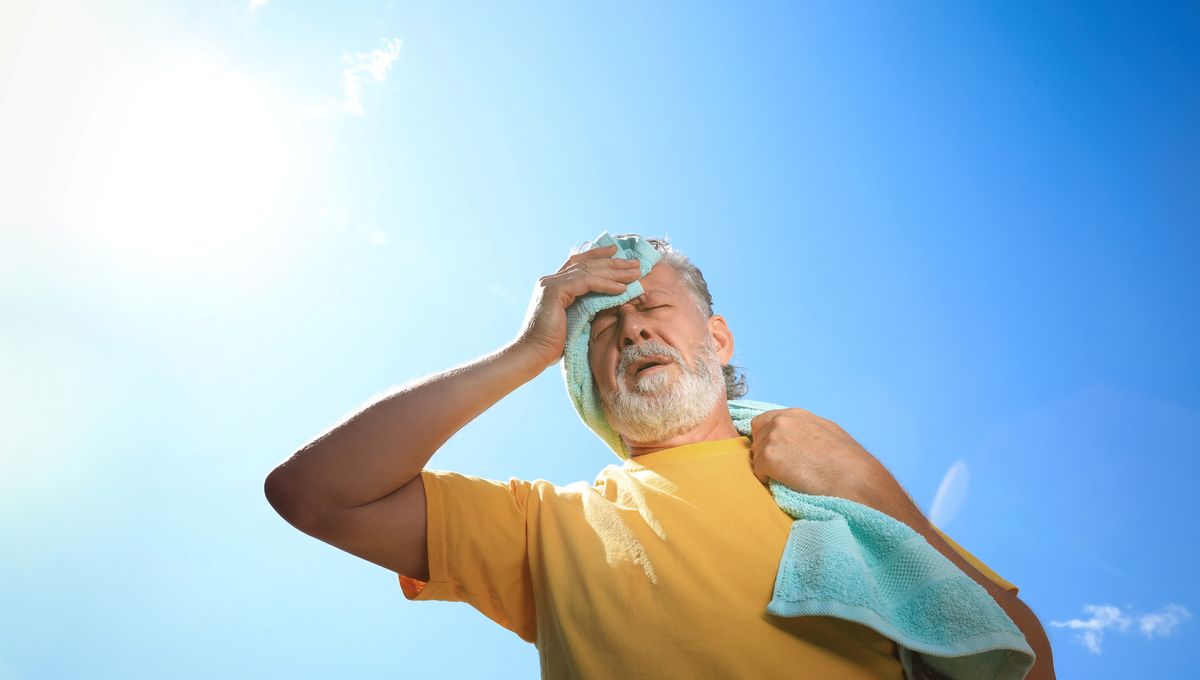
The heatwave currently gripping parts of the US is only the latest in a chain of sweltering temperatures that have hit regions across the globe, and with this trend, the realities of heat-related illness are becoming all too real.
Not only is the extreme heat causing problems in the animal world, but it’s affecting humans too; recent heatwaves have caused deaths across Europe, India, and Saudi Arabia.
One way the human body tries to cope with the heat is by sweating – but what happens when that isn’t enough?
Heat exhaustion
“People often talk about heat exhaustion and heat stroke as though they are separate things. But they exist on a spectrum from not-so-serious to a significant and life-threatening emergency,” Dr Thomas Waters, an emergency medicine physician, explained in a Cleveland Clinic Health Essentials post.
Heat exhaustion sits somewhere in the middle – though it can progress to the more dangerous heatstroke if left untreated.
The main initial sign of heat exhaustion is excessive sweating, a last-ditch attempt to cool the body down through the evaporation of sweat from the skin. This is triggered by the hypothalamus, a small region in the brain that regulates body temperature. Using the nervous system, it sends signals to the sweat glands, which respond by amping up sweat production.
But in heat exhaustion, this isn’t enough to keep the body cool, and its core temperature can reach between 38.3 to 40°C (101 to 104°F). At this stage of sweating, it also becomes difficult to replace all of the fluids and electrolytes lost, which can lead to dehydration and some of the other symptoms of the illness.
For example, the body needs minerals such as sodium and potassium for sending nerve signals, proper muscle function, and maintaining the balance of fluid and blood volume. If those important electrolytes aren’t replaced, that can lead to an increased heart rate to try and make up for lower blood volume, muscle cramps, dizziness, and weakness.
Nausea and vomiting can also by symptoms of heat exhaustion as, like sweating, it’s a way of getting rid of something in the body that holds on to heat. “Not only are these signs of heat exhaustion, but they can also make it difficult to recover from heat exhaustion when you are trying to rehydrate,” said Isabel Valdez, physician assistant and assistant professor of general internal medicine in a Baylor College of Medicine press release.
Heatstroke
If heat exhaustion is left untreated, or the body is unable to cool down within 30 minutes, then it can progress to a potentially life-threatening condition called heatstroke. At this point, the body is no longer able to control its temperature, which can rapidly rise above 40°C (104°F) – though contrary to popular belief, people don’t always stop sweating at this point.
“Clinically, heatstroke is characterized by central nervous system (CNS) dysfunction, multiorgan failure, and extreme hyperthermia (usually >40.5°C [105°F]),” write the authors of a review on the condition.
In terms of the CNS – aka the brain and spinal cord – that can manifest itself in noticeable signs like confusion, slurred speech, loss of consciousness, or seizures. That’s because the brain is extremely sensitive to overheating, with the excessive temperatures causing damage to its cells, which can cause them to become dysfunctional or die. This can be fatal, or leave survivors with permanent, disabling damage.
Problems with the CNS can lead to issues with other organs in heatstroke, but another big contributor to the multiorgan failure seen is a massive stress response from the immune system.
Quite how the process works is unclear, but the reaction from the immune system to overheating is a body-wide inflammatory response. Under other circumstances, a healthy level of inflammation is good for fighting off infection or helping injuries to heal; but in this case, the response is excessive to the point it can cause serious damage, with consequences like kidney, liver, or heart dysfunction or even failure.
Treating heat-related illness
With heat exhaustion, it’s important to get out of the heat as soon as possible, then take off any unnecessary clothing, rehydrate (both cool water and sports drinks can be good for this), and cool the skin using things such as cold packs, sprayed or sponged water, and fans. This can be done wherever the person with symptoms happens to be.
However, heatstroke is classed as a medical emergency and as such, emergency services should be called.
“It can become deadly very quickly. Heat stroke isn’t something you can just push through, no matter how strong you are,” said Dr Waters. “The most important thing you can do is pay attention to the warning signs and listen to your body.”
All “explainer” articles are confirmed by fact checkers to be correct at time of publishing. Text, images, and links may be edited, removed, or added to at a later date to keep information current.
The content of this article is not intended to be a substitute for professional medical advice, diagnosis, or treatment. Always seek the advice of qualified health providers with questions you may have regarding medical conditions.
Source Link: What Happens When The Body Overheats?